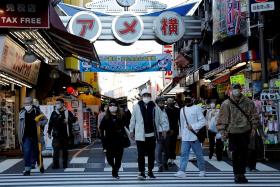As US raises interest rates, Fed may turn more hawkish
WASHINGTON Under the cloud of an escalating trade war, the US Federal Reserve this week will raise the benchmark lending rate for the third time this year, moving to prevent inflation from mounting too quickly as the economy continues brisk growth.
The Fed's two-day policy meeting will begin soon after President Donald Trump is due to target another US$200 billion (S$272 billion) in Chinese imports with punitive tariffs, bringing the total to more than US$250 billion.
That will deliver a blow to trade relations between the world's top two economies and cast a pall of uncertainty over the global economic outlook.
But analysts say the trade war has yet to make much of a dent in the US economic data that central bankers watch closely.
Since the Fed's last meeting, job creation and GDP numbers have shown robust health, wages have risen and inflation has firmed, though measures of industrial activity and the housing market have softened.
Among those sounding a warning, the International Monetary Fund has warned the escalating trade war could come at "significant economic cost", hitting US and China's growth.
But with the US economy robust, the Fed has repeatedly signalled it expects to continue "gradual" increases in the rate used to set everything from car loans to mortgages. By year end, the central bank is likely to have raised the key interest rate four times with three more increases expected next year.
This will mean the target rate will reach a range of 3.0-3.25 per cent by December next year - a notch above what policymakers currently view as "neutral," meaning it neither stimulates nor restrains the economy, which is the goal.
If there are signs that inflation is accelerating, the Fed could certainly move to tighten policy to dampen prices. But even staying neutral may be a moving target.
Fed Governor Lael Brainard, who had long called for the Fed to proceed slowly with rate hikes, described an important change in her thinking in a speech earlier this month.
"With government stimulus in the pipeline providing tailwinds to demand over the next two years, it appears reasonable to expect the shorter-run neutral rate to rise somewhat," she said. This suggests she may not want the Fed to stop at 3.0-3.25 per cent, but continue nudging the rate higher.
"It was a very important shift," said chief economist Diane Swonk at Grant Thornton. But she said it remains unclear whether the Fed will move more aggressively next year by raising rates faster.
Meanwhile, some policymakers who in January will take a turn as voting members of the rate-setting Federal Open Market Committee also have begun to send more hawkish signals.
Boston Fed President Eric Rosengren, who favoured the Fed's near-zero rate policyafter the financial crisis, has said in recent interviews that estimates of neutral could go up.Even the Chicago Fed's Charles Evans, a longtime dove, has suggested that monetary policy may need to become "restrictive".
But Mr Joseph Gagnon, senior fellow at the Peterson Institute for International Economics, said the pace of Fed action is unlikely to change soon.
"I don't think there'll be an acceleration for at least the next six months," he said, but that will change if inflation picks up.
The Fed's preferred measure of inflation is currently hovering at the two per cent annual target, a level it has not exceeded in six years.- AFP
Get The New Paper on your phone with the free TNP app. Download from the Apple App Store or Google Play Store now


